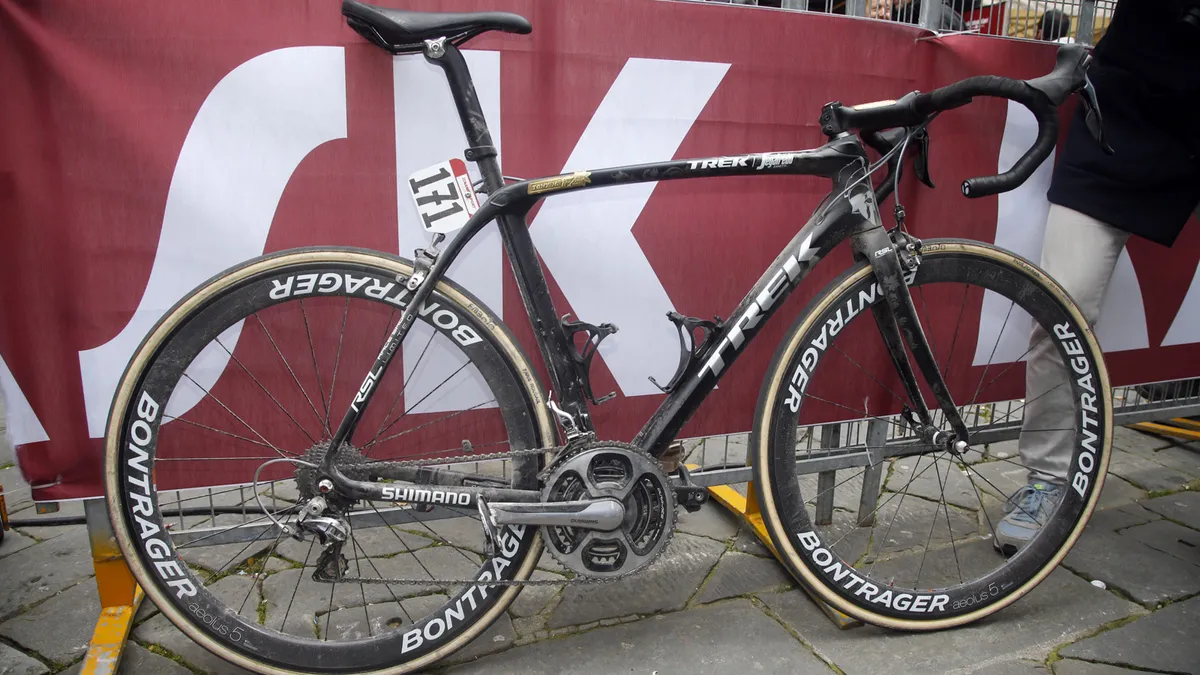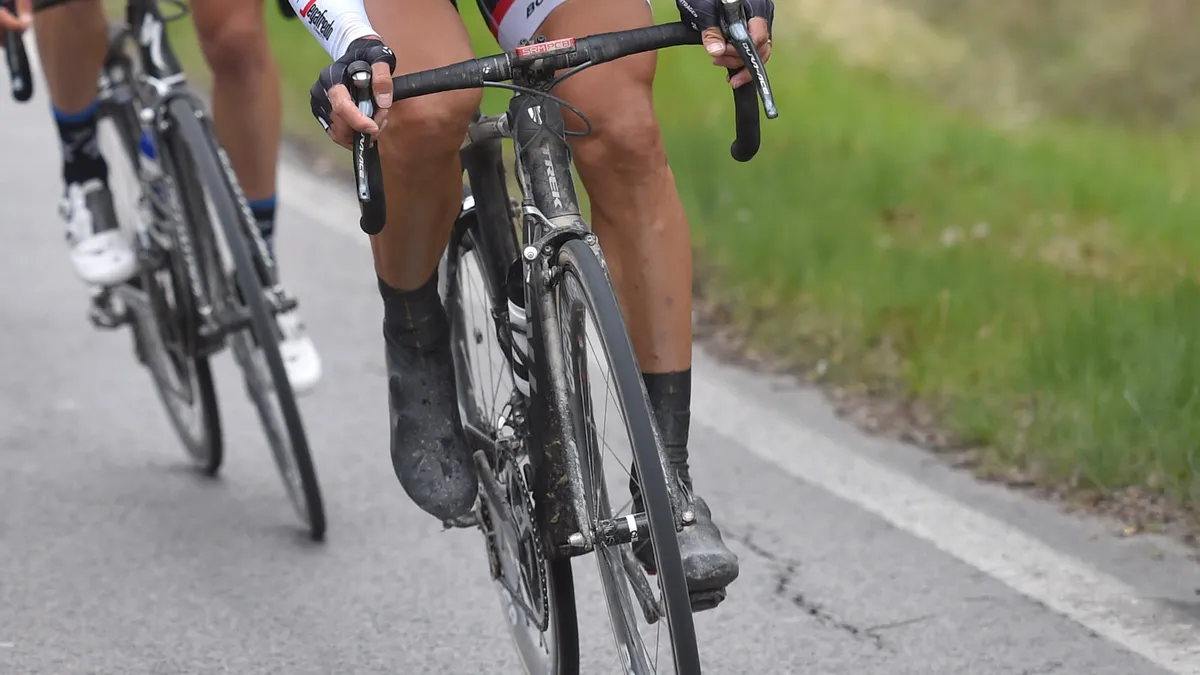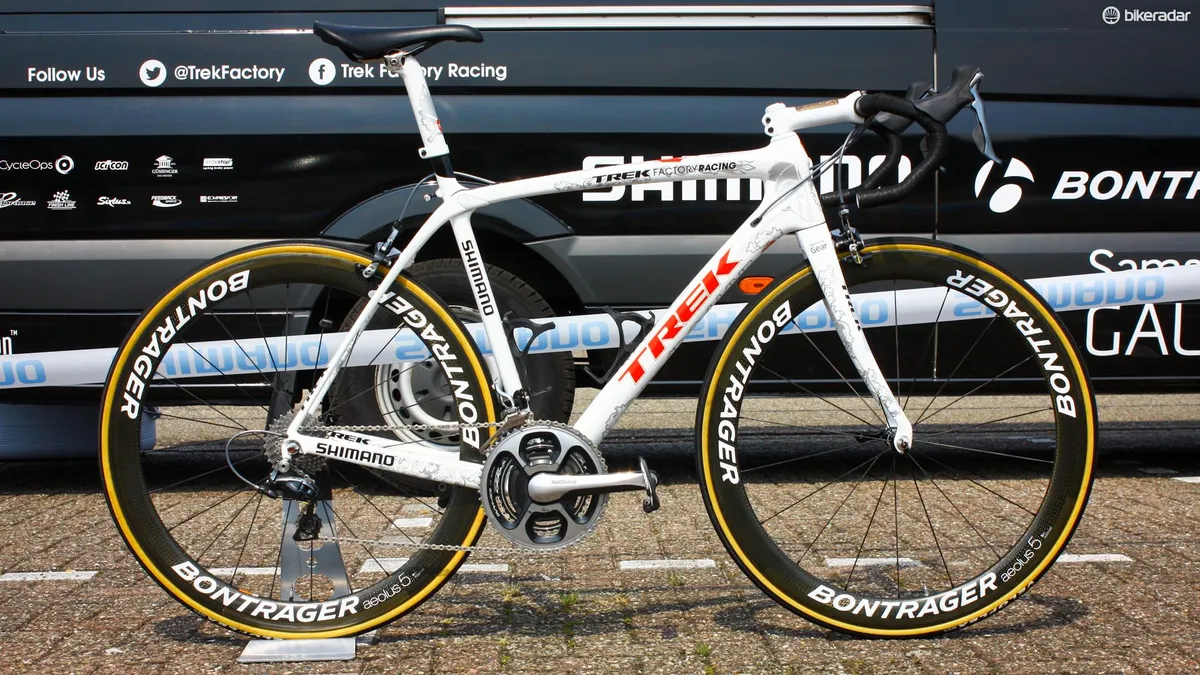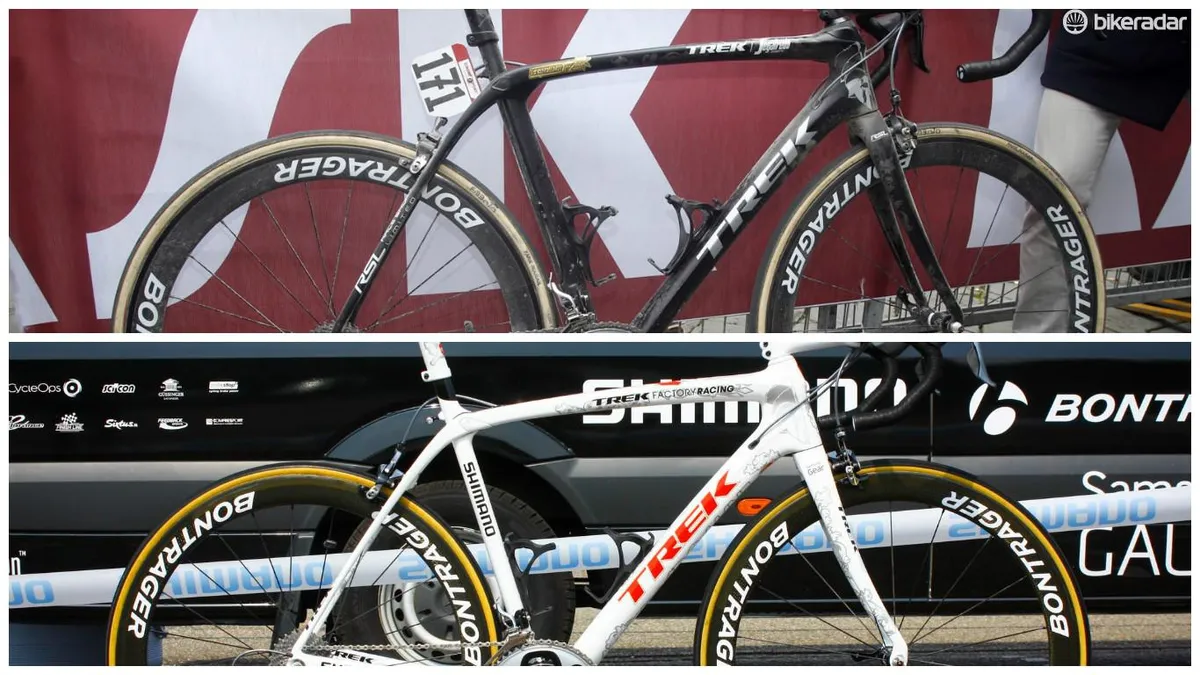On Saturday Fabian Cancellara (Trek-Segafredo) won his third Strade Bianche aboard a curious unreleased Trek Domane bike that sports at least two new technologies.
Looking side-on at the bike, it appears Cancellara is riding the next generation of Trek’s endurance bike, the Domane. The original Domane was first revealed in 2012 and has remained largely unchanged since.
Designed to soak up the cobbles (or general bumps) the Domane’s main trick is the Isospeed pivot, which isolates the seat tube from the top tube. This allows the seat tube and connecting seat mast to act as long uninterrupted lever and greatly reduces vibrations and impacts when seated. It’s a technology that has since been rolled out into Trek’s Boone cyclocross range, the Procaliber hardtails and, most recently, the ultra-aero Madone 9 Series.
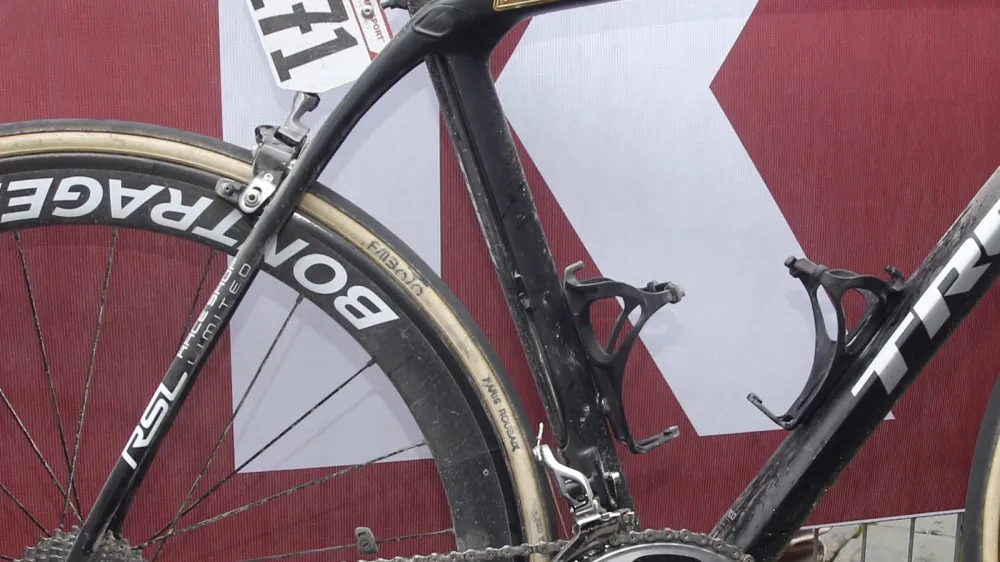
A split seat tube is most certainly new
It appears this new generation Domane continues with the Isospeed technology, but ups the comfort ante. The seat tube reveals a major change, moving from the previous round tube to what appears to be a split-tube design. This is reminiscent of the Canyon VCLS 2.0 seat post, where far greater vertical flex is given by creating a leaf spring of sorts.
Related reading: Comfort riding seatposts
It’s tough to tell from the photo, but it's possible a vibration-dampening elastomer is sandwiched between this split-tube design. Additionally, the seatstays appear to have a greater curve from the previous generation, something likely done to reduce the transfer of forces from the rear wheel before reaching the top tube.
The large head tube appears to be hiding something special too. There is a visible split in the upper portion, which leads us to believe it’s some of elastomer-based vibration dampener. While it's difficult to say how it works, it’s likely that such a design could just rely on tight tolerances and be simply held in place by the fork steerer.
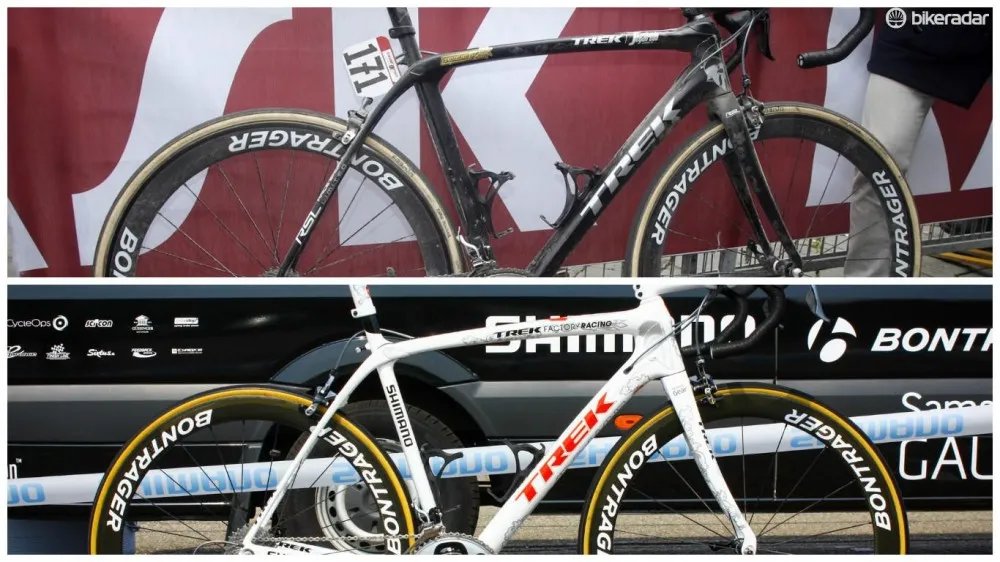
Old versus new
Seen on the seatstays and front fork, direct-mount rim brakes reveal another frame change. The current model has standard rim brakes.
Designed to offer a stiffer braking platform, the direct-mount standard could be used here to add clearance at the top of the tyre. Where standard road brakes need a central mounting position, and material to reinforce the area, the direct-mount system places a mounting point on each side. Such a system is nothing new to Trek, as the previous Madone was the first to market with the standard in 2012.
Trek declined to comment on this bike, as companies often do when riders are riding advanced prototypes or are actively teasing upcoming models.
"Trek is always in development of new products with our race team," said Michael Mayer, Trek's global road product marketing manager. "Trek will provide information on new products when they are available for all riders around the world to enjoy."
The rest of Fabian Cancellara’s bike seems rather familiar from years past, including his preference for Shimano Dura-Ace mechanical shifting over Di2.
